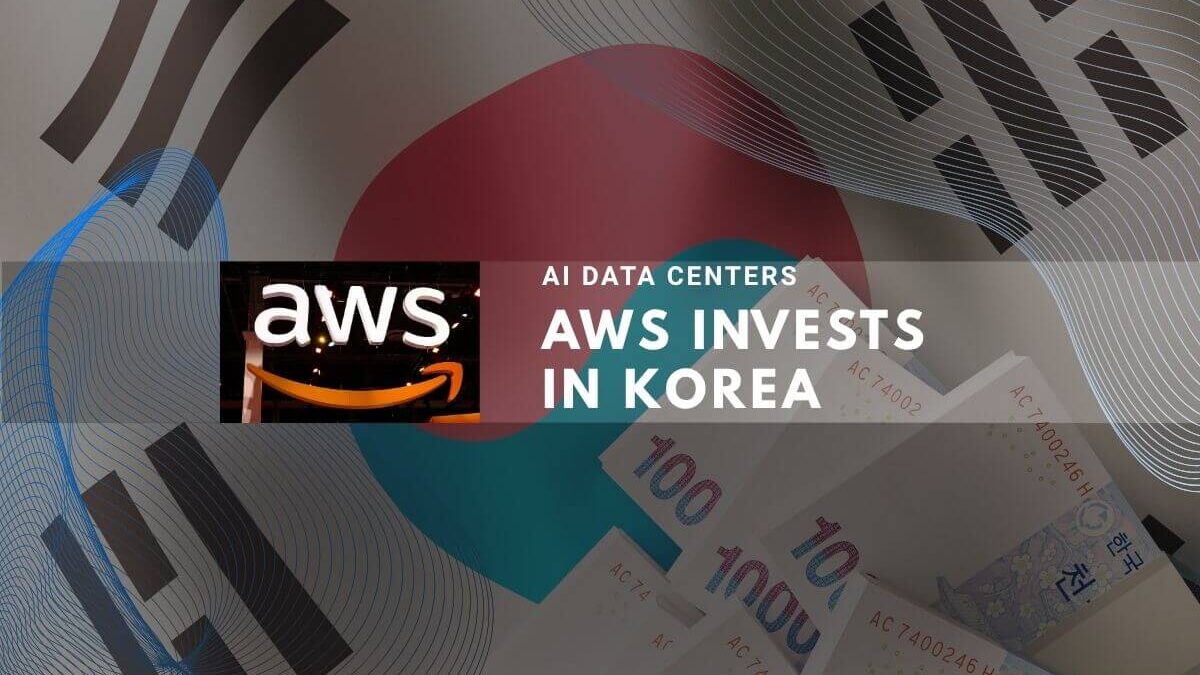Amazon Web Services committed $5 billion to build artificial intelligence data centers across South Korea by 2031. AWS CEO Matt Garman announced the investment during a meeting with President Lee Jae Myung at the APEC summit in Gyeongju on October 29, 2025. This follows AWS’s June 2025 announcement of a $4 billion partnership with SK Group to construct the nation’s largest data center in Ulsan.[1][2][3][4][5][6][7][8][9]
AWS Investment Details and Geographic Locations
AWS will deploy the new data centers across Incheon and Gyeonggi Province near Seoul. The company plans to source high-performance memory chips from Samsung Electronics and SK Hynix for these facilities.[3][6][10][11][12][13][14]
AWS South Korea Commitments:
- June 2025: $4 billion for Ulsan data center with SK Group[7][8][9]
- October 2025: $5 billion for Incheon and Gyeonggi Province[2][5][1][3]
- Combined total: Approximately $9 billion through 2031[15][7]
Seven Global Companies Commit $9 Billion
Seven multinational corporations pledged $9 billion in combined investments over five years at the APEC summit.[6][16][15]
| Company | Investment Sector |
|---|---|
| Amazon Web Services | AI data center infrastructure[1][3] |
| Renault | Electric vehicle manufacturing[16][15] |
| Siemens Healthineers | Medical device production[16][15] |
| Amkor Technology | Semiconductor packaging[16][15] |
| Corning | Advanced materials[16][15] |
| Air Liquide | Industrial gases[16][15] |
| Umicore | Battery materials[16][15] |
Individual investment amounts for the six non-AWS companies have not been publicly disclosed.[16][15]
South Korea AI Leadership Strategy and Infrastructure
President Lee positioned the investment as essential to South Korea’s goal to rank among the world’s top three AI economies. The nation faces infrastructure bottlenecks including power supply constraints and semiconductor availability challenges.[10][17][18][19][3][6]
Key strategic factors:
- Advanced semiconductor manufacturing capabilities[13][14][20]
- Skilled technical workforce in data operations[17][10]
- Government support for technology investment[6][15]
- Proximity to major Asia-Pacific markets[21][22]
AWS Regional Expansion Across Asia-Pacific
AWS committed $40 billion across 14 non-U.S. APEC economies through 2028. The company projects this will generate approximately $45 billion in U.S. GDP benefits. Regional expansion includes Japan, Australia, New Zealand, and Singapore.[11][23][1][7]
Samsung and SK Hynix Supply Advanced Memory Chips
Samsung Electronics and SK Hynix signed agreements to supply high-bandwidth memory and DRAM chips for AI infrastructure projects. The companies plan to produce approximately 900,000 advanced memory wafers monthly.[12][14][24][13]
SK Hynix reported record Q3 2025 profit of $7.9 billion driven by AI chip demand. The company has pre-sold significant portions of its 2026 production capacity.[20][25][26][27][28]
The Stargate project is a $500 billion global AI infrastructure initiative involving OpenAI, Oracle, and SoftBank with U.S. data center locations in Texas, New Mexico, Ohio, and Wisconsin. Samsung and SK Hynix supply memory chips for Stargate but no official announcement confirms Stargate data center operations in South Korea.[29][30][31][32][12]
